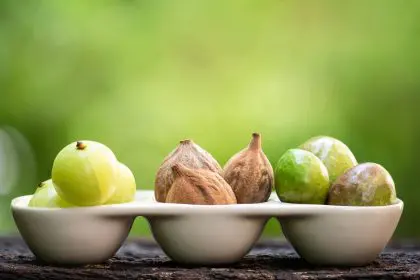That orange sitting in your fruit bowl? It might be more powerful than you think. While we’ve all grabbed citrus fruits when fighting a cold, these tangy powerhouses might deserve a permanent spot in your pain management arsenal. From the persistent ache of arthritis to the inflammatory fire of autoimmune conditions, citrus fruits are emerging as surprising allies in the battle against chronic pain.
But how can something as simple as a grapefruit help with something as complex as inflammation? It’s not magic – it’s biochemistry. And understanding this connection might just change how you stock your kitchen from now on.
The inflammation connection
Let’s talk about inflammation for a second. It’s not always the villain it’s made out to be. When you cut your finger or catch a virus, that immediate inflammatory response is your body’s frontline defense team rushing to the rescue. The redness, swelling, and heat you feel are actually signs that your body is working properly.
The problem arises when this helpful, acute inflammation refuses to stand down after the threat passes. This chronic inflammation is like having your body’s alarm system permanently stuck in the “on” position – eventually, the constant alert state starts causing damage instead of preventing it.
Chronic inflammation plays a central role in conditions ranging from rheumatoid arthritis and fibromyalgia to more surprising connections like heart disease and depression. It’s also a major driver of the pain that makes these conditions so difficult to live with day to day.
This is where citrus fruits enter the picture, offering multiple compounds that can help turn down the volume on inflammatory signals throughout your body.
The citrus superpower spectrum
Not all citrus fruits are created equal when it comes to fighting inflammation. Each brings its own unique combination of compounds to the table:
Oranges – the well-rounded warrior
The humble orange packs more than just vitamin C. It contains over 170 different phytochemicals and more than 60 flavonoids, many with anti-inflammatory effects. Its balance of compounds makes it particularly effective at neutralizing free radicals – those unstable molecules that can trigger and perpetuate inflammation throughout your body.
What makes oranges especially valuable is their combination of water-soluble and fat-soluble compounds, meaning they can target inflammation in different parts of your cellular structure. The whole fruit, including the pith, contains the highest concentration of beneficial compounds, so choosing whole oranges over just the juice gives you maximum anti-inflammatory impact.
Lemons and limes – the detox duo
These tart citrus varieties are inflammation fighters in their own right, with unique properties that help your body process and eliminate inflammatory compounds. They’re particularly rich in d-limonene, a compound found in the peel that helps activate liver enzymes responsible for clearing toxins and inflammatory byproducts from your system.
The acid in lemons and limes also helps slow the digestion of carbohydrates, which can help prevent the blood sugar spikes that contribute to systemic inflammation. Starting your day with warm lemon water isn’t just a wellness trend – it’s a simple way to get these benefits consistently.
Grapefruit – the metabolism modifier
This larger citrus fruit contains naringenin, a flavonoid with particularly potent anti-inflammatory effects. What makes naringenin special is its ability to activate AMPK, an enzyme that regulates metabolism and reduces inflammatory signaling throughout the body.
Grapefruit also contains significant amounts of lycopene in its pink and red varieties, the same compound that gives tomatoes their reputation as an anti-inflammatory food. This combination of compounds makes grapefruit especially beneficial for inflammatory conditions that also involve metabolic factors.
Unexpected heroes – kumquats, pomelos, and bergamot
These less common citrus varieties contain unique compounds not found in their more familiar cousins. Kumquats, which are eaten whole, provide an especially concentrated source of anti-inflammatory compounds from both the flesh and peel. Bergamot contains high levels of special flavonoids that have shown promise in reducing pain signaling in early research.
If you can find these specialty citrus varieties, they’re worth adding to your anti-inflammatory arsenal for their unique benefits and to diversify the compounds you’re consuming.
How citrus fights your inflammation fires
The anti-inflammatory power of citrus works through multiple mechanisms in your body:
Vitamin C – more than just immune support
While we typically associate vitamin C with immune function, it’s also a crucial player in controlling inflammation. It helps reduce the production of inflammatory cytokines – the signaling molecules that tell your body to increase inflammatory responses.
What’s particularly interesting about vitamin C is its role in collagen production and tissue repair. By supporting faster and more complete healing, vitamin C helps resolve the underlying damage that can perpetuate chronic inflammation, especially in conditions affecting joints and connective tissue.
For maximum benefit, aim for consistent intake rather than occasional large doses. Your body uses vitamin C best when it has a steady supply rather than occasional spikes.
Flavonoids – the colorful inflammation fighters
The vibrant colors of citrus fruits come from their flavonoid content – compounds that do far more than just make fruit pretty. Citrus flavonoids like hesperidin, naringin, and quercetin directly inhibit inflammatory pathways in your cells.
What makes these compounds particularly valuable is their ability to cross the blood-brain barrier, meaning they can help reduce neuroinflammation – a key factor in conditions like migraine headaches and some types of chronic pain that originate in the nervous system rather than the joints or muscles.
Antioxidant action – putting out the free radical fires
Inflammation and oxidative stress are closely linked, each making the other worse in a vicious cycle. The antioxidants in citrus fruits help break this cycle by neutralizing free radicals before they can trigger or amplify inflammatory responses.
What gives citrus an edge over isolated antioxidant supplements is the synergistic effect of its multiple compounds working together. The whole fruit provides a complex of antioxidants that support and enhance each other’s effects in ways that single-compound supplements can’t replicate.
The gut connection
One of the most fascinating aspects of citrus fruits’ anti-inflammatory effects happens in your digestive system. The soluble fiber in citrus, particularly in the form of pectin, feeds beneficial gut bacteria that produce short-chain fatty acids with powerful anti-inflammatory properties.
This gut-mediated effect means that even if inflammation is occurring in distant parts of your body – like your joints or your brain – the benefits of citrus can still reach those areas through changes in your systemic inflammatory state that start in the gut.
The fibrous membranes between citrus segments are particularly rich in this beneficial pectin, giving you another reason to choose whole fruits over juices when fighting inflammation.
Practical ways to get more citrus benefits
Knowing citrus can help fight inflammation is one thing, but incorporating it effectively into your daily routine is another. Here are some practical approaches:
Beyond the glass – citrus in meals
While orange juice might be your first thought, incorporating citrus into meals provides more sustained benefits. Try adding orange segments to salads, using lemon zest in marinades, or including grapefruit in a fruit salsa to top proteins.
Cooking with whole lemons, as done in Mediterranean preserves or Moroccan tagines, allows you to benefit from compounds in both the flesh and peel. The heat can actually help release some beneficial compounds that might be less bioavailable in raw citrus.
The peel potential
Don’t throw away those peels. The colorful outer layer of citrus fruits contains the highest concentration of certain beneficial flavonoids. While you wouldn’t want to eat the peel directly, zesting citrus over foods adds both flavor and anti-inflammatory compounds.
For a more concentrated approach, you can also steep citrus peels in hot water to make an anti-inflammatory tea. Just make sure you’re using organic, unwaxed citrus if you’ll be consuming the peel in any form.
Timing matters
When fighting inflammation and pain, consistency often yields better results than quantity. Having smaller amounts of citrus regularly throughout the week is generally more effective than having a large amount once in a while.
Many people find benefits from starting their day with citrus, as the compounds can help set the stage for lower inflammatory responses to stresses encountered throughout the day.
Pairing for power
Certain foods can enhance the anti-inflammatory effects of citrus. Combining citrus with sources of healthy fats like olive oil or avocados helps your body absorb more of the fat-soluble anti-inflammatory compounds. Similarly, pairing citrus with black pepper can increase the bioavailability of certain flavonoids.
This is why traditional food combinations like citrus vinaigrettes on salads often deliver more health benefits than we might realize – our culinary traditions sometimes incorporate scientific principles discovered long before we understood the biochemistry behind them.
Realistic expectations and consistency
It’s important to approach citrus as part of your anti-inflammatory strategy rather than a magic bullet. For chronic inflammation and pain, dietary approaches generally show gradual improvements over weeks rather than immediate relief.
Think of citrus as part of your foundation for long-term inflammatory control rather than an acute pain reliever. Consistency is key, with benefits building over time as the cumulative effects of regular consumption influence your body’s inflammatory set point.
The beauty of using citrus as part of your pain management approach is its safety and compatibility with other treatments. Unlike many pharmaceuticals, citrus can generally be incorporated alongside other pain management strategies without concern for negative interactions.
For those living with the persistent challenge of chronic inflammation and pain, every natural tool in the arsenal matters. The next time you enjoy the bright flavor of an orange or the tang of lemon in your water, remember you’re not just pleasing your taste buds – you’re also sending in reinforcements for your body’s fight against inflammation.
And in the battle against chronic pain, sometimes the most powerful allies come in the most unexpected packages – like that unassuming citrus fruit in your kitchen.

















